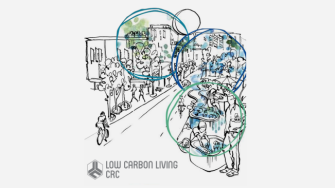Program 1: Integrated Building Systems

PV represents a great opportunity for buildings, with the potential to add value to any type of construction. It can have many applications including electricity generation, daylighting, shading, thermal energy generation as well as innovative architectural and aesthetic design.
This study is based upon a thorough, state of the art investigation to identify the opportunities and barriers taking into account technical, economical, industrial, work organisation and regulation matters. It will include analysis to establish functional specifications and to give the proper framework for innovation. Finally, it will disclose a report of the prospects for BiPV and propose a roadmap.
Prof Stuart Wenham, UNSW
Complete
02/2013 to 07/2013
- Publications
- Posters
- Partners
CRCLCL Project Reports
RP1003: PV as an integrated building material: Status report, barriers and opportunities
This publication provides a status report on the project underway to identify opportunities and barriers, establish functional specifications, and propose a roadmap for the uptake of building integrated PV.
Conventional photovoltaic (PV) module costs are reducing as manufacturers scale up PV production. Crystalline silicon (single or multi-crystalline wafers) still dominates the industry while thin film manufacturers, apart from CdTe, are having difficulty competing. The cost of the PV device is decreasing most significantly as production increases. This leaves module costs as well as Balance of Systems costs as the major barriers to further lowering costs.
As costs fall, the levelised cost of electricity (LCOE) from PV is now, in many places cost competitive with retail electricity prices. PV on buildings is therefore the most economic location to install PV.
CRCLCL Project Posters
Research Snapshot Poster - RP1003
Research Snapshot A3 size poster from Participants Annual Forum 2014.
Partners on this project
- UNSW - Sydney